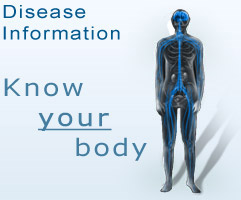Migraine
What is migraine?
Migraine is a condition that causes attacks of headaches. Other symptoms, such as feeling sick, nausea or vomiting are also common. Between migraine attacks, the symptoms go completely. There are two main types of migraine:
- migraine without aura (common migraine); and
- migraine with aura (classic migraine).
Who gets migraine?
Migraine is a common condition affecting more women than men. It most commonly first starts in childhood or as a young adult. Some people have frequent attacks - sometimes several a week - while others have attacks only now and then. Some people may not develop a migraine for years between attacks. In some cases the migraine attacks stop in later adult life. However, in some cases the attacks persist throughout life.
Symptoms of a migraine attack
Migraine without aura
This is the most common type of migraine. Symptoms include the following:
- The headache is usually on one side of the head, typically at the front or side. Sometimes it is on both sides of the head. Sometimes it starts on one side and spreads all over the head. The pain is moderate or severe and is often described as "throbbing" or "pulsating". Movements of the head may make it worse. It often begins in the morning, but may begin at any time of day or night. Typically, it gradually gets worse and peaks after two to 12 hours and then gradually eases off. However, it can last from four to 72 hours.
- Other common symptoms include feeling sick (nausea), vomiting, avoiding bright lights or loud noises and wanting to lie in a dark room.
- Other symptoms that sometimes occur include loss of appetite, blurred vision, poor concentration, stuffy nose, hunger, diarrhoea, abdominal pain, passing lots of urine, going pale, sweating, scalp tenderness and sensations of heat or cold.
Migraine with aura
About one in four people with migraine have migraine with aura. The symptoms are the same as those described above (migraine without aura), but also include an aura (warning sign) before the headache begins.
Visual aura is the most common type of aura. Examples of visual aura are a temporary, partial loss of vision, flashes of light, objects may seem to rotate, shake or "boil".
Numbness and "pins and needles" are the second most common type of aura. Numbness usually starts in the hand, travels up the arm and then affects the face, lips and tongue. Legs are sometimes involved.
Problems with speech are the third most common type of aura.
Other types of aura include smelling an odd smell, food cravings, a feeling of well-being and other odd sensations.
Phases of a migraine attack
A migraine attack can be divided into four phases:
- a "premonitory" phase occurs in up to half of people with migraine; you may feel irritable, depressed, tired, have food cravings or "just know" that a migraine is going to occur; you may have these feelings for hours or even days before the onset of the headache;
- the aura phase (if it occurs);
- the headache phase; and
- the resolution phase, when the headache gradually fades; during this time you may feel tired, irritable, depressed and you may have difficulty concentrating.
Causes
Most migraine attacks occur for no apparent reason. However, something may trigger migraine attacks in some people. Triggers can be all sorts of things. For example:
Diet
Examples are unhealthy dieting, irregular meals, cheese, chocolate, red wine, citrus fruits and foods containing tyramine (a food additive).
Environmental
Examples are smoking and smoky rooms, glaring light, visual display unit (VDU) monitors, such as that of a computer, or flickering TV sets, loud noises and strong smells.
Psychological
Examples are depression, anxiety, anger or tiredness.
Medicines
Examples are hormone replacement therapy, some sleeping tablets and contraceptive pills.
Other
Examples are menstruation, shift work, changing sleeping patterns and menopause.
It may help to keep a migraine diary. Make note of when and where each migraine attack started, what you were doing, and what you had eaten that day. A pattern may emerge and it may be possible to avoid one or more things that may trigger your migraine attacks.
Diagnosis
There is no test to confirm migraine. A doctor can be confident that you have migraine if you have the typical symptoms. However, some people with migraine have non-typical headaches. Sometimes tests are done to rule out other causes of headaches. Remember, if you have migraine, you do not have symptoms between attacks. A headache that does not go away or other symptoms that do not go away are not due to migraine.
Tension headaches are sometimes confused with migraine. These are the common headaches that most people have from time to time. Note: If you have migraine you can also have tension headaches at different times to migraine attacks.
Treatment
Painkillers
Paracetamol or aspirin work well for many migraine attacks. A lot of people do not take a painkiller until a headache becomes really bad. This is often too late for the painkiller to work well. The only solution may then be to find a quiet, dark room to "sleep it off".
Anti-inflammatory painkillers
Anti-inflammatory painkillers probably work better than paracetamol or aspirin to ease a migraine. Although, strictly speaking aspirin is an anti-inflammatory painkiller. They include ibuprofen, diclofenac and naproxen.
Dealing with nausea and sickness
Migraine attacks may cause nausea (feeling sick) or vomiting. The nausea causes poor absorption of tablets into your body. If you take painkillers, they may remain in your stomach and not work well if you feel sick. You may even bring the tablets back up by vomiting. The following tips may help:
- Use soluble (dissolvable) painkillers. These are absorbed more quickly from your stomach and are likely to work better.
- You can take an anti-sickness medicine with painkillers. A doctor may prescribe one. Like painkillers, they work best if you take them as soon as possible after symptoms begin.
- An anti-sickness medicine is available as a suppository if you feel very sick or vomit during migraine attacks. A painkiller suppository is also available.
Triptan medicines
A triptan is an alternative if painkillers do not help. These include almotriptan, eletriptan, frovatriptan, naratriptan, rizatriptan, sumatriptan and zolmitriptan. They are not painkillers. They work by interfering with a brain chemical called 5HT. An alteration in this chemical is thought to be involved in migraine. Some triptans work in some people and not in others. Therefore, if one triptan does not work, a different one may well do so. Most people who have migraine can usually find a triptan that works well for most migraines and where side-effects are not too troublesome.
Do not take a triptan too early in an attack of migraine. This is unlike painkillers described above, which should be taken as early as possible. You should take the first dose when the headache (pain) is just beginning to develop, but not before this stage. For example, do not take it during the premonitory or aura phase until the headache begins.
Preventing migraine attacks
A medicine to prevent migraine attacks is an option if you have frequent or severe attacks. It may not stop all attacks, but the number and severity of attacks are often reduced. Medicines to prevent migraine are not painkillers and are different to those used to treat each migraine attack. A doctor can advise you on the various medicines available.
Reference:
 TransmedBanner4.jpg)

